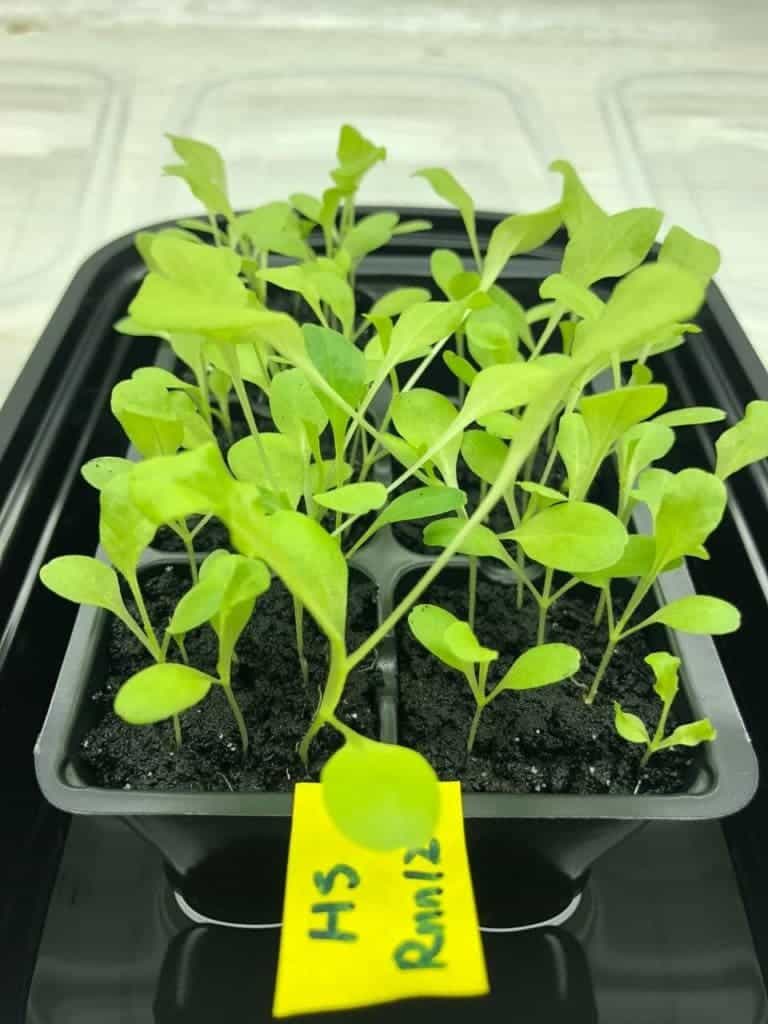Crude-drenched soil can be made clean and fertile again — and all you need is some heat.
Researchers from Rice University have devised a simple and cost-effective method of cleaning soil contaminated by heavy oil spills. The technique is effective enough to allow for Simpson black-seeded lettuce (genus Lactuca), for whom petroleum is highly toxic, to grow in soil samples scrubbed this way.
Lettuce clean this soil
“We saw an opportunity to convert a liability, contaminated soil, into a commodity, fertile soil,” says Pedro Alvarez, coauthor of the study describing this new method.
Large-volume marine oil spills naturally garner a lot of attention. However, over 98% of oil spills occur on land, the team notes, with over 25,000 such events reported to the Environmental Protection Agency per year. The sheer number of these events and the quantity of soil they contaminate makes it very important that we develop a cost-effective (and actually-effective) remediation process, the team writes.
They turned to the process of pyrolysis, which has been employed in various ways since antiquity. It involves steadily heating a particular substance — soil in our case — while preventing contact with oxygen. The last bit is important as it avoids damaging the fertile soil by hydrocarbons combusting (which cause spikes in temperatures).
“Clays retain water, and if you raise the temperature too high, you basically destroy them,” says study coauthor Kyriacos Zygourakis. “If you exceed 500 degrees Celsius (900 degrees Fahrenheit), dehydration is irreversible.”
The team worked with soil samples from Hearne, Texas, which they contaminated with heavy crude in the lab. These samples were placed into a kiln, where the team experimented with different temperature intervals to see what would work best.
They report that heating samples in a rotating drum at 420°C (788°F) for 15 minutes removed 99.9% of total petroleum hydrocarbons (TPH) and 94.5% of polycyclic aromatic hydrocarbons (PAH) in the soil samples. This is roughly on par with naturally-occurring pollutant levels in uncontaminated soils.
“While heating soil to clean it isn’t a new process,” Zygourakis said, “we’ve proved we can do it quickly in a continuous reactor to remove TPH, and we’ve learned how to optimize the pyrolysis conditions to maximize contaminant removal while minimizing soil damage and loss of fertility.
“We also learned we can do it with less energy than other methods, and we have detoxified the soil so that we can safely put it back.”
The 420°C seems to produce the best cost-result ratio, he adds. Heating samples to 470°C (878°F) did a marginally better at removing contaminants, but used more energy and decreased the soil’s fertility so much as to make it unusable.
The team tested how fertile each treated sample was by trying to grow Simpson black-seeded lettuce, a variety for which petroleum is highly toxic, on the original clean soil, some contaminated soil and several pyrolyzed soils. Plants in the treated soils had a somewhat slow start, they write, but by the 21-day mark, lettuce grown in pyrolyzed soil (with fertilizers or simply water) showed the same germination rates and had the same weight as those grown in clean soil.
To test whether their method actually scrubbed the soil clean of contaminants, rather than just breaking down crude oil, the team enlisted the help of Bhagavatula Moorthy, a professor of neonatology at Baylor College of Medicine. Moorthy studies the effects of airborne contaminants on neonatal development. His tests revealed that while extracts from oil-contaminated soils were toxic to human lung cells, exposing the same cell lines to extracts from treated soils had no adverse effects. This strongly suggests that any airborne particles (such as dust) released by pyrolyzed soils wouldn’t be laced with toxic pollutants like PAHs.
”One important lesson we learned is that different treatment objectives for regulatory compliance, detoxification and soil-fertility restoration need not be mutually exclusive and can be simultaneously achieved,” says Alvarez.
The paper “Pilot-Scale Pyrolytic Remediation of Crude-Oil Contaminated Soil in a Continuously-Fed Reactor: Treatment Intensity Tradeoffs” has been published in the journal Environmental Science & Technology.










